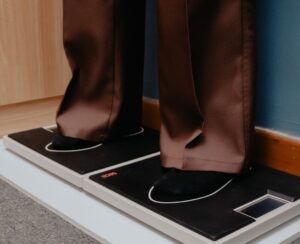
Can a Chiropractor Help with Balance Problems?
In this guide, we embark on a journey to uncover the causes behind balance problems. As we unravel and address the burning question: Can chiropractors

Welcome to the Chiropractic Singapore Blog, your gateway to a wealth of knowledge on spinal health and overall well-being. Our blog is a treasure trove of free, educational content crafted to enhance your understanding of the profound importance of spinal care. Explore our diverse range of articles, all designed to empower you with insights and tips for leading a pain-free, vibrant life.
Whether you’re seeking to align your mind, body, and goals or simply want to make informed choices about your health, our blog is your trusted source for wellness wisdom. Dive in and embark on a journey to a healthier, happier you.

In this guide, we embark on a journey to uncover the causes behind balance problems. As we unravel and address the burning question: Can chiropractors

In this guide, we delve into the world of flat feet and how chiropractic care can be a game-changer in finding relief. If you’ve ever

We believe in fostering comprehensive well-being through a holistic approach to health. In this article, we delve into the world of orthopaedic care and its

At Chiropractic Singapore, we understand that a proactive approach to health is key to living your best life. Our commitment goes beyond managing pain; we

Embarking on an active lifestyle in Singapore brings a myriad of opportunities for fitness enthusiasts, but it also introduces the possibility of sports-related challenges. In

The spine, a crucial component of our anatomy, demands careful attention and expert care when issues arise. In this guide, we’ll unravel the nuances between
Enjoy $55 off your first check-up (U.P. $105) using the promo code ONLINE50 at check-out.
Enter your e-mail to start the booking process.
Note: X-rays and the first adjustment are not included in this promotion. For the safety of our patients, there will be no adjustments during the first visit.
CELEBRATE WORLD HEALTH DAY WITH US
Enjoy $67 off your first check-up (U.P. $105) using the promo code HEALTH38 at check-out.
Enter your e-mail to start the booking process.
Note: X-rays and the first adjustment are not included in this promotion. For the safety of our patients, there will be no adjustments during the first visit.